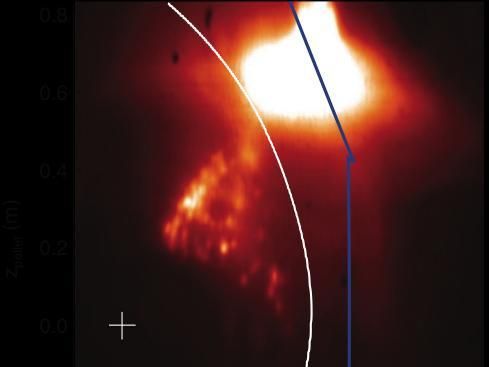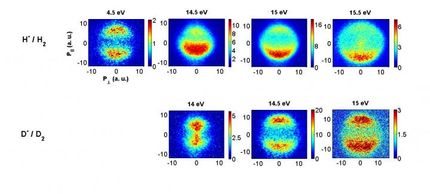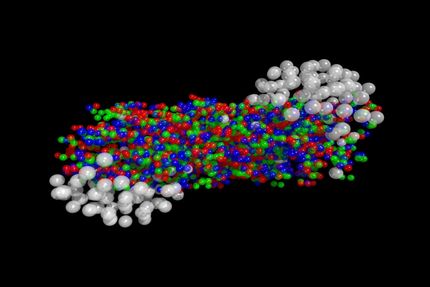Mixing an icy cocktail to safely cool hot plasma
A promising solution to controlling hot plasmas in fusion devices
Advertisement
Recent experiments conducted at the DIII-D National Fusion Facility at General Atomics (GA) show promise in an innovative approach to controlling unwanted hot spots inside the devices, called tokamaks, which contain energy-producing fusion plasma at temperatures hotter than the Sun's core.

Visible light image of SPI into a tokamak plasma. Ice shards can be seen entering the plasma (invisible, edge indicated by white line) heading toward plasma core (indicated by white cross). Bright light at top is gas (used to propel the pellet), which does not penetrate the plasma edge. Blue line indicates the outer wall of the DIII-D tokamak.
R.A. Moyer UC-San Diego
Sometimes researchers need to cool the hot plasma very rapidly, explains GA physicist Nicholas W. Eidietis about recent experiments with ice pellet injection, "But cooling the plasma too much or too little will both cause problems. These experiments show we have control over the plasma shutdown."
Dr. Eidietis along with a team led by Dr. Daisuke Shiraki of Oak Ridge National Laboratory have "chilled out" unwanted hot spots inside the fusion vessel by injecting pellets of frozen neon and deuterium straight into the hot plasma.
While he calls the tokamak a promising fusion reactor design for developing fusion energy, a significant challenge are unwanted events called "disruptions." Disruptions occur when thermal and magnetic energy in the plasma is rapidly lost in a few thousandths of a second. Disruptions result in very large heat loads and mechanical forces on the walls surrounding the plasma, which could damage the reactor.
One promising approach for mitigating damaging effects of disruptions is the rapid injection (at the speed of a bullet) of a large ice pellet into the hot plasma. The pellet shatters before entering the tokamak, avoiding the possibility of an icy "bullet" damaging the vessel wall, a process that gives the technique its name, Shattered Pellet Injection (SPI).
The pellet fragments cause the plasma to radiate away its energy uniformly as light, reducing localized heating of the tokamak wall and the mechanical forces exerted on the machine. This technique, developed by Oak Ridge researchers, has been demonstrated at DIII-D by a team of scientists from GA, Oak Ridge National Laboratory, the University of California, San Diego, and Lawrence Livermore National Laboratory.
Recent progress in SPI uses frozen pellets composed of neon and deuterium. This allows researchers to control various aspects of the disruption by varying the pellet "icy cocktail" mixture. This will be important in future large tokamaks such as ITER, now under construction in France by an unprecedented scientific partnership involving 35 nations.
The techniques demonstrated in this work provide a simple means of controlling disruption characteristics by adjusting the mixture of gases cooled to form the ice pellet. An example of this is shown in Figure 2, where the amount of neon in the pellet mixture is varied between three different disruptions, resulting in significant differences in the concentrated heat loads transmitted to the machine wall. Other properties of the disruption, such as the plasma current decay and the flow of halo currents, are also found to vary significantly based on the choice of pellet mixture.

































































